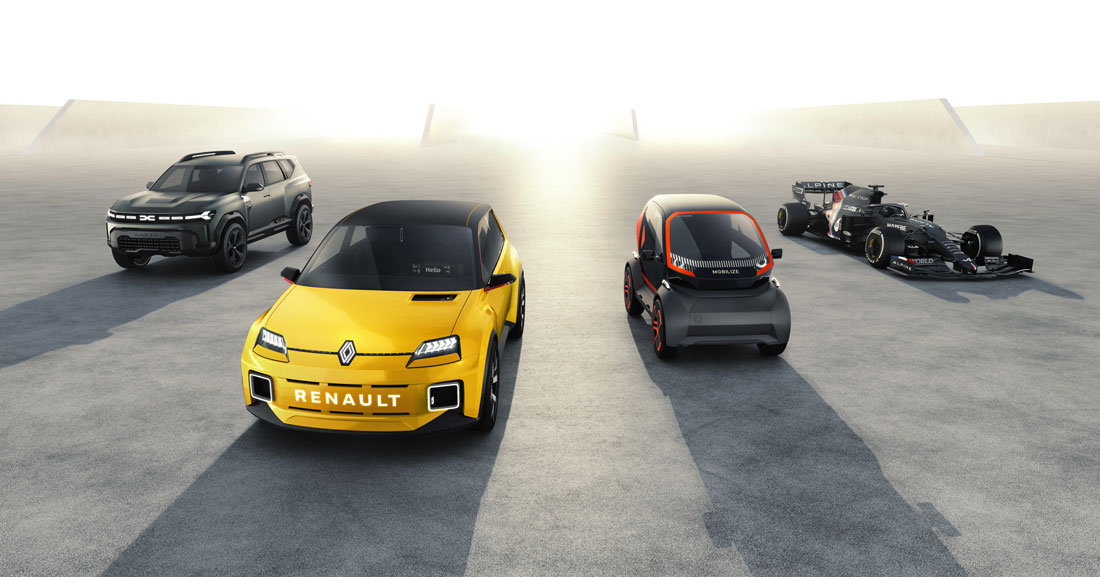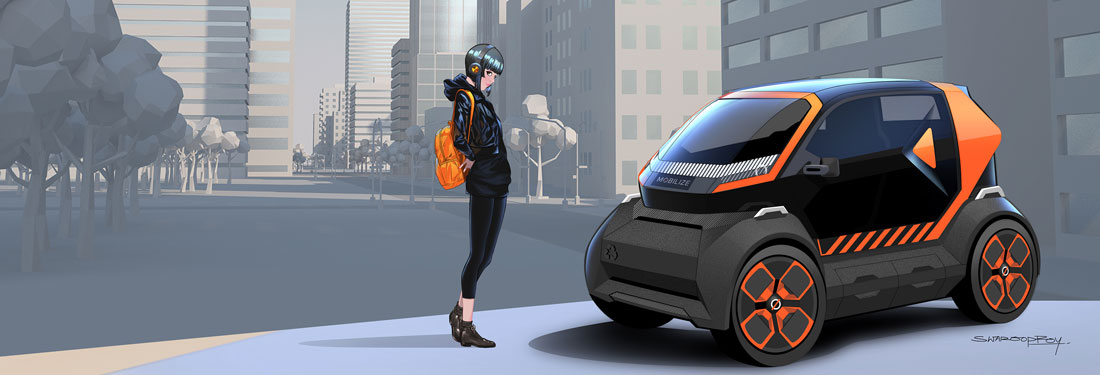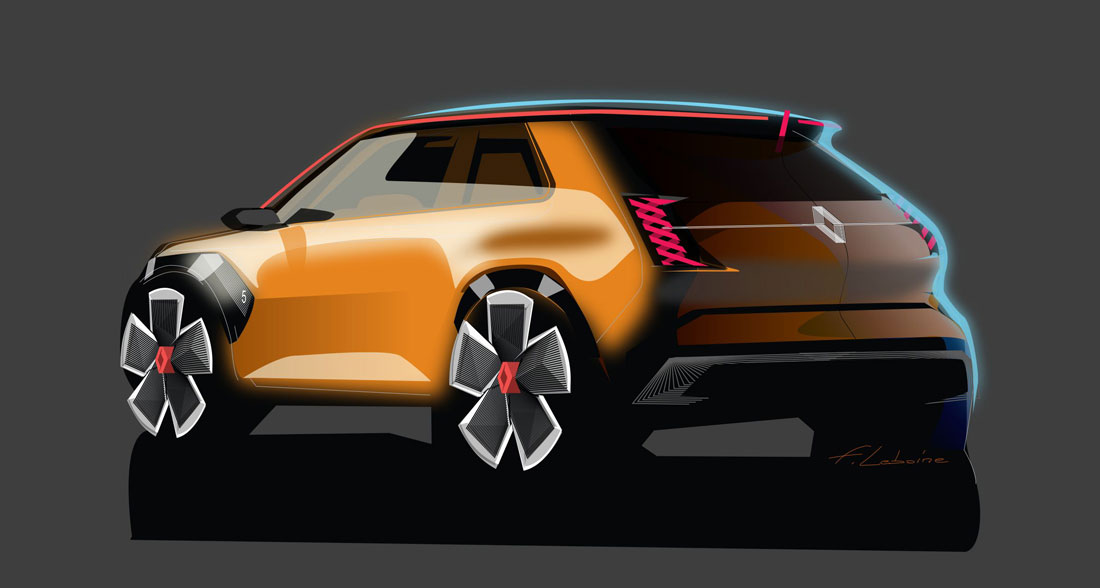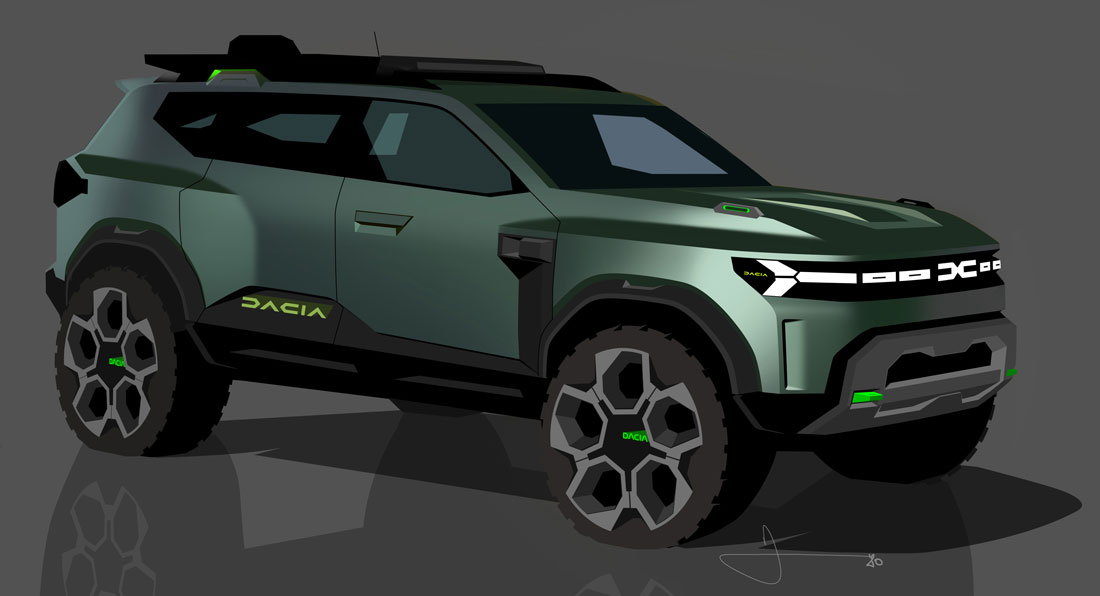The Renaulution announced by Luca de Meo, CEO of Renault group, aims to transform the French manufacturer, projecting it into the future, and design is one of the main protagonists of this revolution. The process concerns platforms, technologies, forms, and models, and has accelerated the Design reorganisation phase that can now count on a boss for each brand with the supervision of Laurens Van den Acker (Gilles Vidal for Renault, Alejandro Mesonero-Romanos for Dacia, Anthony Villain for Alpine, and Patrick Lecharpy for Mobilize). In the next pages, we’ll tell you about this revolution that, the designers insist, “will leave a mark”.
Laurens van den Acker, Designing the design team
The wind of change in the Renault group with the arrival of the new CEO Luca de Meo has also profoundly revolutionised design. “There is a great feeling between him and everyone in our team. Luca has the ability to easily understand the desires of the market and is a great design enthusiast, which is an excellent starting point,” says Laurens van den Acker, Executive Vice President Renault Group Design and since 2019 member of the executive committee, with satisfaction.
Mobilize, a new brand for the future
The aim is therefore to put more emphasis on the personality of each brand, in order to attract an increasingly diverse audience: “Dacia is accessibility at its best. Renault is the technology brand within the reach of many. Alpine is sportiness, elegance and sustainability, given its vocation to become 100% electric. And, finally, Mobilize is the new brand for the mobility of the future, shared and perfect for the metropolis of tomorrow.”
by Edoardo Nastri
Gilles Vidal, Reanult 5 Prototype
Dynamic in its language, contemporary in its configuration and details, yet unmistakably hinged on a formal construction that will soon celebrate a half century: the latest creation of Renault design synthesises an intriguing look to the future and a proud, sure, retro flavour. “The original model is so well known and representative that, if you interviewed a number of people in a big piazza, everyone would recall a different memory”, says Gilles Vidal, head of style at Renault since last November. “Someone would imagine the original R5 of 1972, others the celebrated sports versions Alpine and Maxiturbo, and yet others would remember the Superfive of the 1980s designed by Marcello Gandini. This is why we mixed the most characteristic aesthetic elements of every variant, hunting out a truly evocative result, as though to create a compilation of an artist’s greatest works. A kind of ‘best of’”.”
Time for a “best of”
Thus, the muscles around the wheel arches become a plastic tribute to the models with a central, supercharged engine, the tail lights appear suspended between two generations (“But with a very current vertical blade that optimises the aerodynamic flows”, specifies Vidal), while the red profile along the roof visually copies the drip rails of all eras, and the little door for charging, on the front bonnet, is arranged right where the slits of an air vent peeped out until 1984. “The shape of the bodywork is immediately identifiable, from far away, and is confirmed by observing some of its parts, for example, the headlights. But if someone were to photograph the individual details with tight frames, without showing the whole vehicle, you’d never recognise that it was an R5: the grammar of the shapes is completely new, linked to today’s prototypes”, the designer explains.
by Silvio jr. Suppa
Alejandro Mesonero-Romanos, Dacia Bigster
Dacia is also taking part in the Renault revolution – the Renaulution. Beginning with the new head of design, Alejandro Mesonero-Romanos, who returned to Paris, following Luca de Meo, after an exciting and profitable period at Seat. The Bigster concept – a C-segment SUV to be produced by 2025 – is not the only novelty of the Romanian manufacturer, but it is, perhaps, the most significant calling card of the new direction. “It represents the future ambitions of Dacia”, Mesonero-Romanos explains, “with our entry into a segment where we were missing, with a new design language and the ambition to conquer not only the head, but also the heart, of drivers”.
Big sister
After the success of Duster, of which it is a kind of big sister, this Bigster is promising: a solid, though streamlined, structure, an almost geometric treatment of the surfaces, the pronounced wheel arches (especially in the back end), and the large rims, an imposing nose with a new brand logo. Everything underlines the ambition to compete with more famous brands. Mesonero-Romanos observes: “We had to be faithful to the concept that inspires Dacia: a very essential, honest, simple product, including in terms of language. A good design, as well as an intelligent design, that offers an affordable, simple, straightforward product. But in a mix with the spirit of the open spaces of the Duster and the emotions of the Stepway”.
by Fabio Galvano
(Full article in A&D no. 247).

















